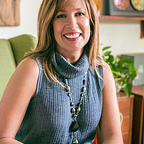Software to Save Humanity (But Not How You Might Expect)
I’ve just had a remarkable experience. For the first time, I presented at a business conference where all the other speakers were saying nearly the same thing that I was. Each in our own way, we all spoke of living systems principles in organizations — things like self-organization, emergence, resilience and wise stewardship. And the audience couldn’t get enough of it, easily embracing things that others find challenging.
What was most remarkable was that it was a gathering of software developers. We were at Microsoft’s New England Research & Development Center — the NERD Center. And my every assumption about techie nerds was shattered.
The conference was hosted by Agile Boston, with leadership from the wonderful Daniel Mezick. The participants were delightfully diverse, with an even mix of gender and age. And though the common interest of those gathered was the Agile method of software development, the core topic was organizational culture. In contrast to other, more heavy-handed methods of developing software, Agile practices are built on values of personal agency, teamwork, transparency, learning and results, with the lightest possible structure to support those. More than a decade of implementation has shown that this is a more effective way to produce software. What the software development world has discovered along the way is that those principles and practices also generate a fundamentally different organizational culture — one that is more nourishing and more filled with life. In this way, the community has come to understand that Agile is not so much an experiment in process but in culture.
The challenge developers face is that their beautiful experiment generally remains quarantined within the IT department, where organizational leadership views it with mistrust. And in a strong majority of cases (as much as 85%), the dominant culture eventually rejects it in a direct immune response. Despite this “low stickiness rate,” the Agile community persists, with unwavering belief.
I shared with Daniel my surprise at finding this experiment in a technology field. He explained that it had to happen in software. “You can’t hide anything in software,” he said. Jim McCarthy, another speaker at the event, had dramatically pronounced: “In software, team equals product.” Any junk the team has is going to show up in the product. Whatever flaw you find in the product can be traced directly back to some aspect of how the team is working. This is probably true in any industry, but in other fields, you can actually get away with delivery of something pretty dismal (as I experienced on my flights home after the conference).
Over the two days of the conference, it was increasingly clear that the software development industry is blazing a fascinating trail. But it was in the event’s closing circle that it hit me like a thunderbolt how important it is.
Earlier this month, I co-hosted a week-long gathering at a retreat center. Among us was a respected Chipewa woman who works to support First Nations communities in different parts of Canada. She described a native prophecy that tells of two paths — one representing technology, the other spirituality. The first is linked with the choices and ways of “the light-skinned race”; the other with the traditional ways and wisdom of indigenous people. In the prophecy, non-native people will choose which path to take. If we continue on our current path — choosing technology over spirituality — we’ll move toward our destruction. In that case, “You’re on your own,” said the Chipewa woman. But according to the prophecy, we have another choice available: to walk in step with indigenous peoples to a thriving future for all.
Our group decided to create a forked talking stick to represent those two paths and to leave the stick behind as an invitation to future groups who would gather at the retreat center. And yet, we were uneasy with the choice of either technology or spirituality. Instead, we sought integration. We wanted to walk a path in which technology is clearly in service of life. And so, at one point, it became clear that we needed to flip the talking stick over, so that it represented not two diverging paths, but two paths coming together into one. And still, we struggled to imagine what that would look like, when technology is fully in service of life.
In the closing circle of the Agile conference, the facilitator suggested that we pass around the microphone in the spirit of a traditional talking stick. And that’s when I realized: this is the first hint of what it looks like when technology is in service of life. This community is living the early stages of that experiment. The techies are showing us the way, demonstrating that the patterns of how we create software code — or anything — are a means of changing the larger code of society. Of walking a new path. They’re developing what my friend Helene Finidori would call “game-changing code,” where the code is a new story of organization. And they’re getting there through practicing “game-changing patterns” of work.
What might be next for the Agile community — and beyond — is more conscious, intentional stewardship of that path. This was the topic of my presentation at the conference. Living systems (including organizations and project teams) require certain fertile conditions if they are to thrive — if life is to thrive at every level within and around them. We can be most skilful in our stewardship if we’re aware of those conditions and if we have the clear intention of creating them. Of crafting the organization or project as a “space for life.”
People have long held on hopefully (if not desperately) to the belief that technology is going to save us from all the problems we’ve created in the world. That might end up being true, just not in the way we imagined.
Originally published at The Age of Thrivability.
